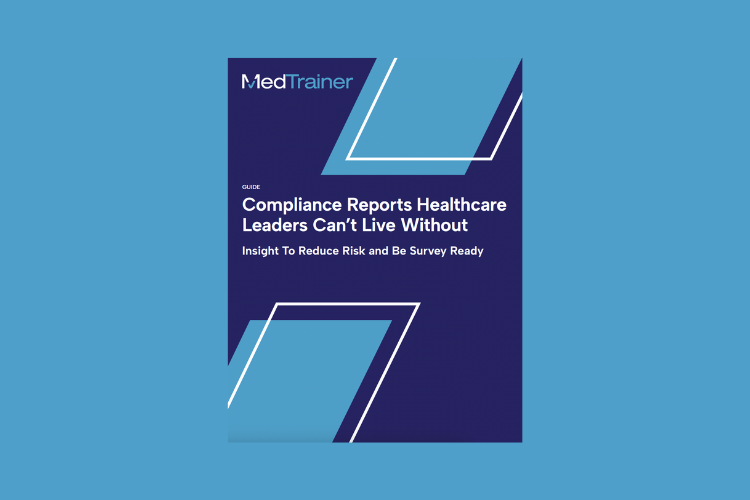Several federal agencies highly recommend having a healthcare compliance committee — the key is to make the committee helpful, not just a regulatory checkbox.
In my experience, that’s easier said than done.
Compliance committees vary based on the size of the organization, the care setting, and the committee’s charter. In this article, I’ll offer ideas and resources to help you determine who should be involved and strategies for maximizing its impact on maintaining standards and safeguarding patients’ interests.
What is a Healthcare Compliance Committee?
A healthcare compliance committee is a cross-functional team that monitors compliance at a strategic level. An influential healthcare compliance committee supports the compliance officer in promoting ethical practices, mitigating risks, and advising on compliance program operations. It serves as a check and balance on the compliance program and compliance program accountability.
The Office of the Inspector General’s (OIG) general compliance program guidance includes a section on the compliance committee, including the primary duties, meeting cadence, and indicators of committee success.
In its Evaluation of Corporate Compliance Programs, the Department of Justice includes compliance as a shared commitment for “Senior and Middle Management” and encourages their participation in oversight. The Centers for Medicare and Medicaid imply that a compliance committee is in place and participates in reporting to the governing board.
Who Should Sit on a Compliance Committee?
The chief compliance officer (CCO), or top compliance professional, should lead the healthcare compliance committee with representation from various departments within the organization. The committee members should have well-defined goals and responsibilities to address risk management and operate the compliance program.
The committee’s composition may vary based on the organization’s size and needs. Still, it should include organization leaders with the authority and ability to speak for their departments. The following roles are typically included:
- Compliance Officer: Acts as the leader of the committee, responsible for overseeing and coordinating compliance efforts across the organization.
- Legal Counsel: Provides legal guidance on compliance matters, ensures that the organization’s practices align with applicable laws and regulations, and helps interpret complex legal issues.
- Chief Medical Officer (CMO) or Chief Nursing Officer (CNO): Represents the clinical perspective and ensures compliance efforts consider the impact on patient care and safety.
- Chief Financial Officer (CFO): Provides insight into financial implications of compliance activities, ensures appropriate allocation of resources, and oversees financial reporting related to compliance.
- Chief Information Officer (CIO) or Chief Technology Officer (CTO): Advises on technology-related compliance issues, including data security, privacy, and electronic health record (EHR) systems.
- Human Resources (HR) Representative: Assists in ensuring that personnel policies and practices comply with regulations and that employees receive adequate compliance training.
- Risk Management Specialist: Identifies and assesses potential risks to the organization related to compliance and develops strategies to mitigate them.
- Quality Improvement Specialist: Monitors and evaluates the impact of compliance initiatives on healthcare delivery and suggests quality-related improvements.
- Ethics Officer: Guides ethical dilemmas and ensures compliance efforts align with the organization’s moral standards and values.
- Patient Advocate or Representative: Offers the patient perspective and ensures compliance efforts prioritize patient rights, safety, and satisfaction.
The committee should meet regularly with set agendas to proactively create, assess, and maintain compliance policies and procedures. It should also provide methods for reporting and handling compliance violations and be involved in investigations and corrective actions.
Healthcare organizations that do not have the resources or organizational structure to create a formal structure should consider a functional model. The OIG suggests that Small entities that cannot support a compliance officer on either a full-time or part-time basis should consider designating one person as the entity’s compliance contact and have them be responsible for ensuring that the entity’s compliance activities are completed.
The Healthcare Compliance Committee’s Role
An effective healthcare compliance committee is pivotal in fostering a culture of compliance and accountability within the organization. The roles and responsibilities of the compliance committee should be specified in the policies and procedures of the compliance program. Some of these may include:
- Promoting Adherence: The committee promotes adherence to relevant laws, regulations, and internal policies through regular training, communication, and monitoring. It reinforces the importance of compliance and publicly demonstrates their commitment to a culture of integrity and accountability.
- Identifying Risks: The committee proactively identifies potential compliance risks and develops mitigation strategies. It reviews the organization’s activities, processes, and procedures to identify areas of vulnerability and recommends improvements. The committee encourages leaders and employees to make compliance a priority.
- Ensuring Adequate Resources: The compliance committee should be well-versed in regulations and remain up-to-date on changes to ensure the compliance team is adequately resourced.
- Provides Different Perspectives: Compliance committee members may approach compliance differently than the organization’s compliance professional. Their opinions offer a holistic view of risks and opportunities.
By embedding compliance into the organization’s culture and holding employees accountable, the healthcare compliance committee plays a crucial role in safeguarding the organization’s reputation, mitigating legal risks, and protecting patients’ well-being.
Maximize Compliance Committee Impact
A healthcare compliance committee can provide incredible value and insight to the CCO and the organization. Here are a few strategies to get the most out of your committee:
Provide Clear Structure
The OIG’s guidance is an excellent resource for creating structure around your compliance committee. The Healthcare Care Compliance Association (HCCA) also offers a sample charter for inspiration. Here are a few suggestions:
- Maintain a charter or document explaining the compliance committee’s structure, members, and authority.
- Schedule meetings for the entire year and work with administrative assistants to avoid conflicts.
- Distribute an agenda before the meeting and stick to your start and end times.
- Take attendance! Surveyors will want to see this along with the meeting minutes.
Demonstrate an Organizational Commitment To Compliance
The committee should lead by example to actively promote a culture of compliance.
- Implement compliance management software to affirm the importance of compliance within the organization and show a commitment from leadership to simplify the process.
- Include senior leaders on the committee and hold them accountable for maintaining compliance in day-to-day operations.
Develop Accessible Lines of Communication
Pivoting the compliance committee from a checkbox to an effective compliance tool means fostering collaboration and communication among the committee members. This can involve:
- Open dialogue at committee meetings focusing on constructive criticism and continuous improvement.
- Demonstrate organizational transparency and accountability using regular updates and reports to employees and the governing board.

The best compliance and credentialing reports tot surface critical insights and keep you survey ready.
Implement Technology To Simplify Compliance
There are many ways that software can aid the compliance committee in upholding high compliance standards.
- Training and education: When the organization uses a healthcare-specific learning management system (LMS), the compliance committee can focus on improving course completion within their department rather than worrying whether the training is up-to-date.
- Policy management: Software automatically tracks policy revisions, approvals, and expiration dates so the compliance committee can focus on strengthening the policy content. Plus, employees are more likely to follow policies when they are easily accessible.
- Online incident reporting: It’s easier to build a culture of compliance when employees can complete incident reports from anywhere — even anonymously. Plus, the software makes it easy to identify trends and potential issues.
By systematically addressing compliance risks, healthcare organizations can foster a culture of accountability and ensure the delivery of ethical, safe, and high-quality healthcare services. Learn how MedTrainer can help.
